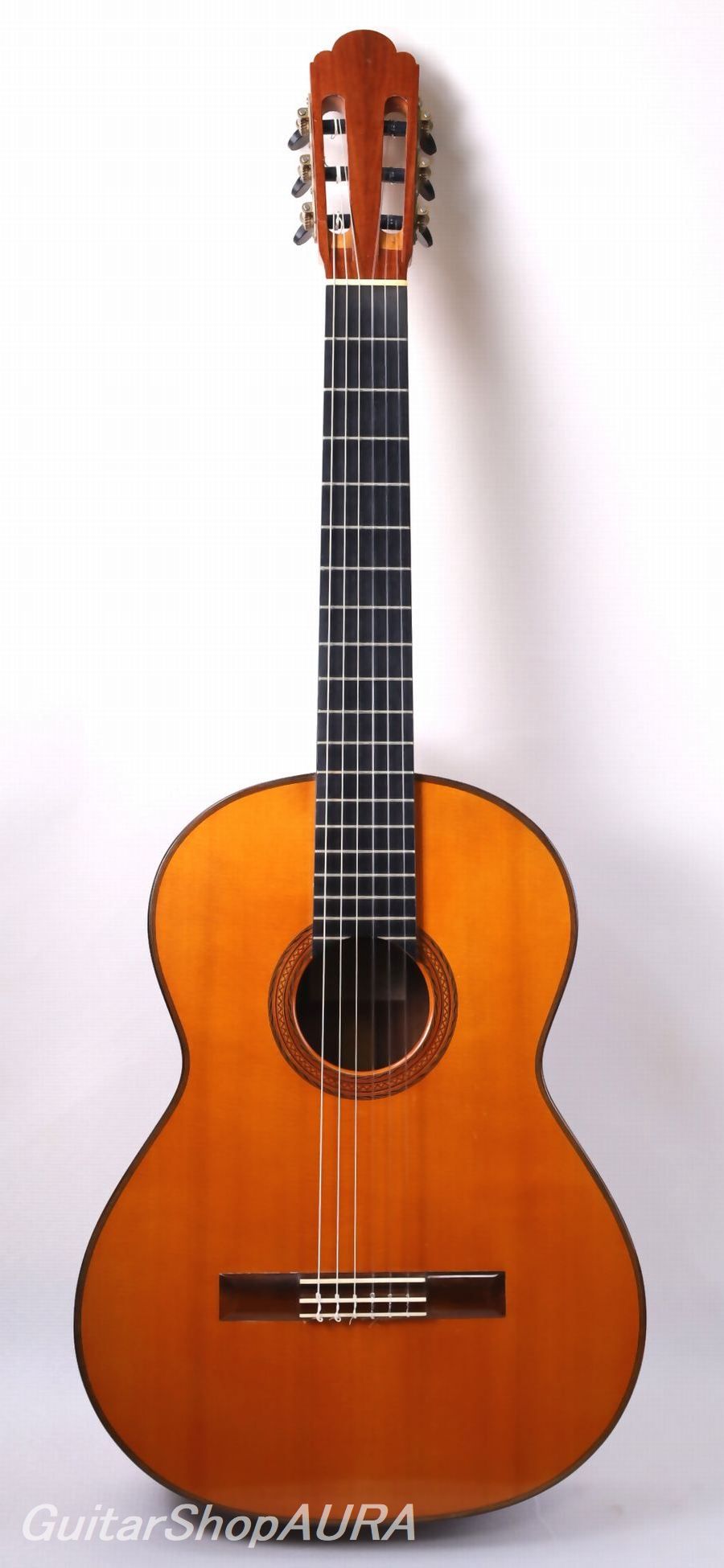
| Instrument | Manuel Velazquez |
| Category | Imported Classical Guitars 〔Vintage〕 |
| Number/Model | |
| Scale length | 650mm |
| Country | U.S.A |
| Year | 1978Year |
| Top | Solid Spruce |
| Side&Back | Solid Indian Rosewood |
| Condition※ | 7 |
| List price | INQUIRE |
| Price (tax included) | Please Inquire |
| option | with Hardcase |
Click to enlarge the photos below
Neck:Cedro
Fingerboard:Ebony
Finish(Top):Lacquer
Finish(Back & Sides):Lacquer
Tuning Machines:SLOANE
String Height(1st):2.7mm
String Height(6th):3.7mm
Maker Information
Manuel Velazquez (1917–2014)
Manuel Velazquez was born in 1917 in Puerto Rico to a family with Spanish ancestry; his maternal grandparents were relatives of the famed luthier Santos Hernández. Though born into a family of farmers, Velazquez began training as a furniture craftsman and soon started making guitars. By the age of 16, he had completed his first instrument. A local musician, impressed by its quality, encouraged him to move to New York, where he arrived in 1941. During World War II, he worked in shipbuilding, continuing to refine his craft.
By the late 1940s, Velazquez’s guitars were favored by local professional musicians, and soon gained international recognition, including praise from Andrés Segovia. In 1972 he returned to Puerto Rico to establish a workshop, later relocating back to the U.S., working in Virginia and then Florida. His son, Alfred, began collaborating in the workshop and inherited the business after Manuel’s passing in 2014.
Velazquez’s craft was deeply inspired by traditional Spanish makers such as Torres, Hauser, and Santos Hernández, with a strong Hauser influence visible in his guitars from the 1950s–60s. In the 1970s–80s, his guitars were built larger, offering rich volume reminiscent of the Ramírez school, before later returning to a more traditional Hauser-based style. Velazquez is celebrated as one of the greatest luthiers in America.
Instrument Information
Manuel Velazquez – 1978, 650mm Scale, Indian Rosewood Back & Sides (Used)
This 1978 Velazquez guitar features a 650mm scale and Indian rosewood back and sides. The bracing follows his standard 1970s layout, inspired by Hauser’s Segovia model with Velazquez’s variation: two harmonic bars above the soundhole, one below, and a diagonal treble bar extending from the lower bar center toward the treble side of the upper bout. Seven fan braces extend downward, terminating on two V-shaped closing bars at the bottom. A thin reinforcement plate is placed under the bridge. Resonance is set slightly above G.
Sonically, the guitar combines a robust Spanish-style projection with Hauser-inspired clarity. The bass has a solid, centered foundation, the treble is sharp yet smooth, and the tonal line across registers is natural and balanced. The instrument produces a slightly tenacious but vibrant tone with clear articulation in ornaments, strong dynamic response, and linearity to touch, resulting in naturally flowing melodic lines. The lightweight body resonates fully, mixing Hauser-like transparency with Velazquez’s unique romantic character.
The guitar retains its original lacquer finish, exhibiting fine weather checking typical of age. Minor playing marks appear around the soundhole, and light wear is present on the back and sides, with no significant repairs. The neck is straight; frets show minimal wear on 1–7, with no impact on playability. The neck is a thin C-shape, string height at the 12th fret is 2.7mm (1st) / 3.7mm (6th), with 1.5–3.0mm saddle reserve for adjustment. Sloane tuning machines function perfectly.
This instrument exemplifies Velazquez’s 1970s tonal aesthetic, offering powerful volume, clarity, and a unique romantic expression, making it highly desirable for performers and collectors alike.